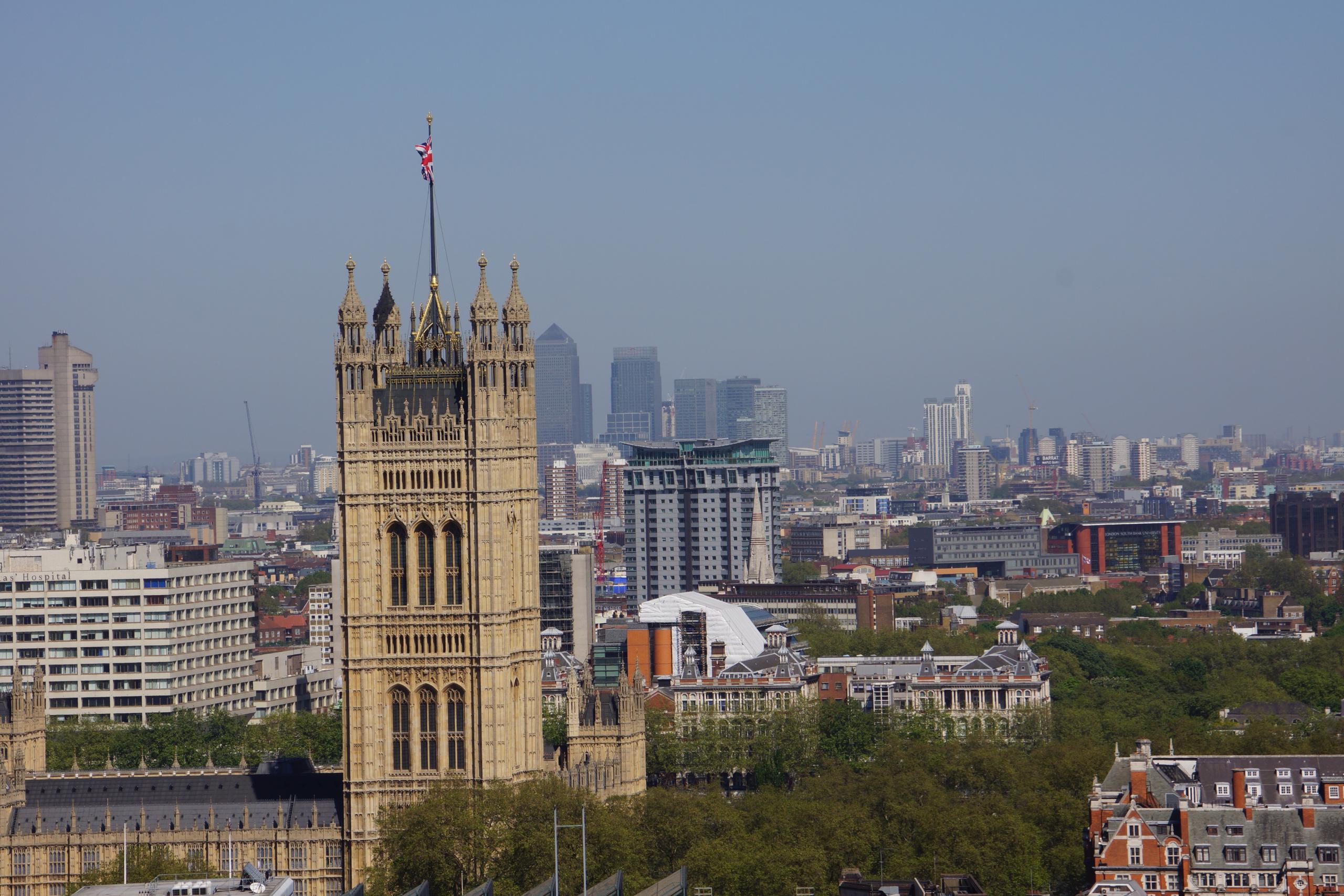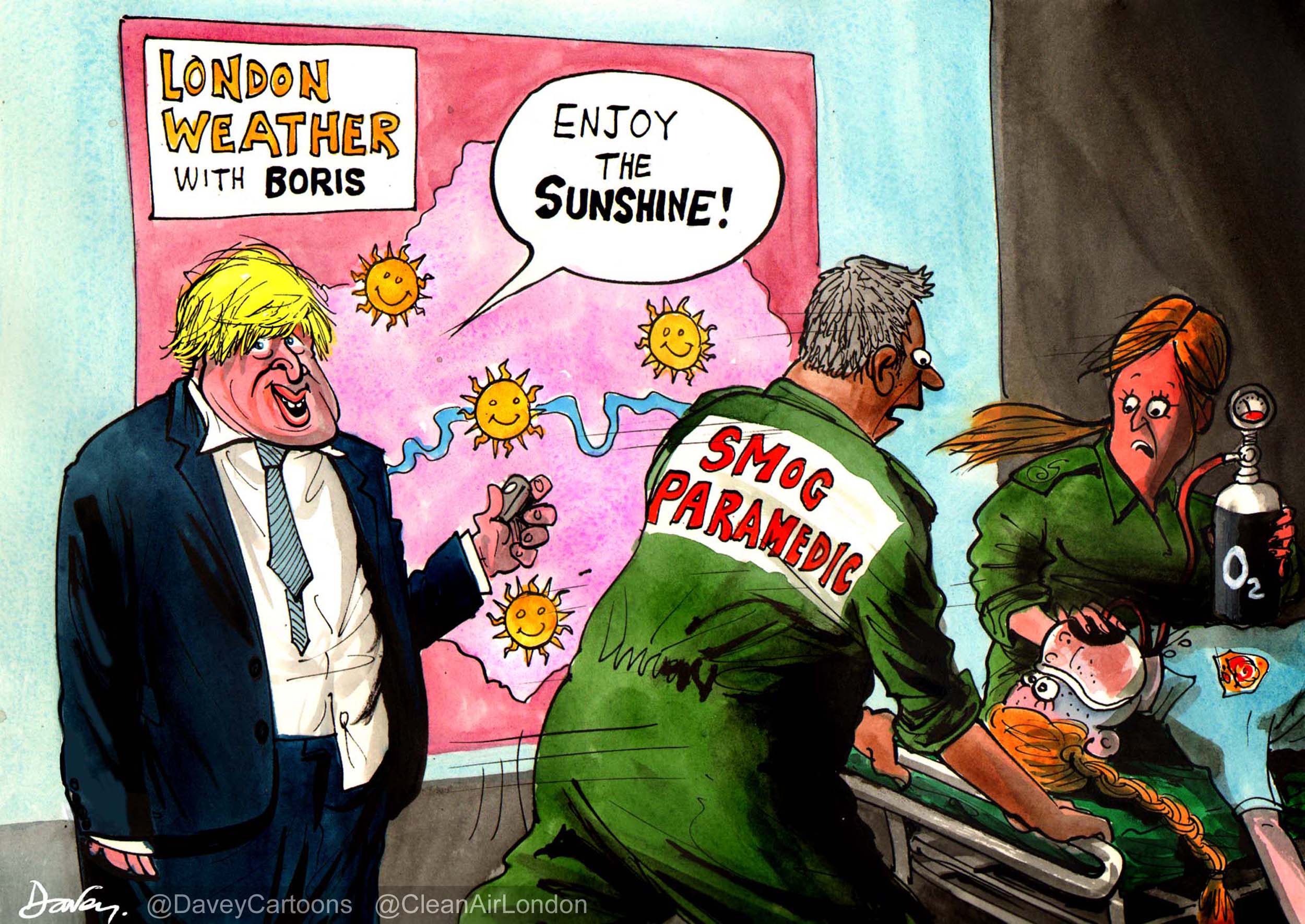Air pollution is the world’s single largest environmental health risk, killing an estimated seven million people every year.
The atmosphere (‘one air’) comprises local air pollution and greenhouse gases. In turn, local air pollution comprises particles and gases. The particles, so called particulate matter, are regulated as a lump for health and regulatory purposes depending on their diameter in microns e.g. fine particulate matter (PM2.5) and particulate matter (PM10). They come from many sources e.g. wood burning, construction etc. Within the cloud of gases, attention tends to focus on one gas i.e nitrogen dioxide (NO2). NO2 is a relatively easy to measure combustion gas and should not be confused with nitrous oxide (N2O or laughing gas).
‘Emissions’ (e.g. from chimneys and exhaust pipes) mix in the air to become ‘concentrations’ (which are regulated for health and legal purposes) which result in ‘human exposures’, ‘health effects’ and ‘death outcomes’ (e.g. heart attacks or strokes).
It is also important to distinguish between primary and secondary concentrations of particulate matter with the former arising from direct emissions (e.g. wood burning) and the latter from secondary chemical reactions in the atmosphere (e.g. ammonia from agriculture reacting with other pollutants in the air to become secondary PM2.5). Ozone (O3) is caused by strong sunlight reacting with combustion pollutants in still air (between April and September when days are hotter and longer).
During the Great Smog (5-9 December 1952), people were worried about respiratory effects from short term exposure to visible smoke from solid fuel burning. It was easy to estimate health effects from ‘time series’ which showed that the number of deaths rose sharply after air pollution rose. Statisticians were able to estimate ‘excess deaths’ by comparing the death toll with the same week in previous years. The toll was estimated at around 4,000 deaths.
It was not until the early 1990s that scientists in the United States used powerful statistical analysis to isolate many possible factors to show that higher annual mean concentrations of PM2.5 resulted in populations dying earlier. This was later found to be due to cardiovascular and other causes e.g. heart attacks, strokes and cancers. The Mayor of London’s advisers estimated (25 January 2021) that between 3,600 and 4,100 deaths were attributable to human-made PM2.5 and NO2 in 2019 i.e. by coincidence similar to the number of deaths during the Great Smog. The mortality burden of long-term exposure to outdoor air pollution in England in 2019 was estimated to be equivalent to 26,000 to 38,000 deaths a year.
We now know that air pollution (of many sorts) effects nearly every organ of people’s bodies at every stage of their lives. Research is pointing to multi-generational health impacts e.g. genetic. It affects us all.
The health effects of short and long-term exposure to air pollution cannot be added together as they overlap to an unknown extent. It is important therefore to be aware of air pollution over the short and long-term and minimise exposure to both.
The World Health Organisation (“WHO”) updated its air quality guidelines for short and long-term exposure to PM2.5, NO2 and other pollutants in September 2021. The guidelines are applicable to both outdoor and indoor environments globally. They do not cover occupational settings. Powerful air pollution laws need to be updated for these new guidelines.
Air pollution and greenhouse gases need to be tackled together to avoid problems seen with diesel or wood burning. Combustion is a common source of emissions and others such as meat eating contribute to PM2.5 and methane.
There is a tremendous opportunity to create cleaner, quieter, healthier cities and towns by mobilising political leadership, technology and lifestyle to reduce air pollution and fight climate change.
Guides and resources
Clean Air in London’s app shows concentrations of PM2.5 and O3 at your current location for the latest hour and last and next 24 hours on ios and android devices. It also reports the number of deaths attributable to long-term exposure to PM2.5 in England.
Clean Air in London’s 21 page submission to the Environmental Audit Committee’s inquiry into “Outdoor and indoor air quality targets” (19 June 2023) explains many of the issues and make recommendations.
Chief Medical Officer’s Annual Report on Air Pollution (8 December 2022).









